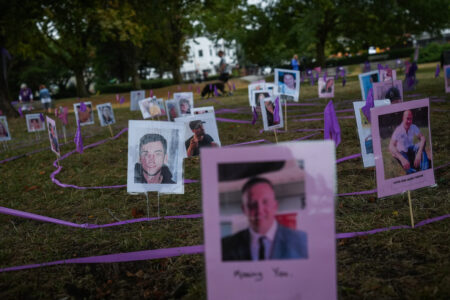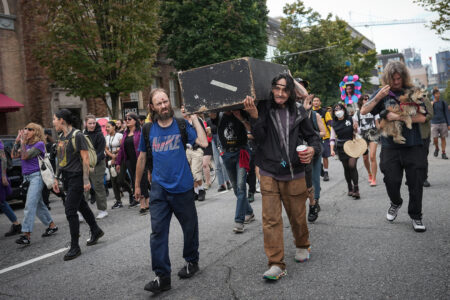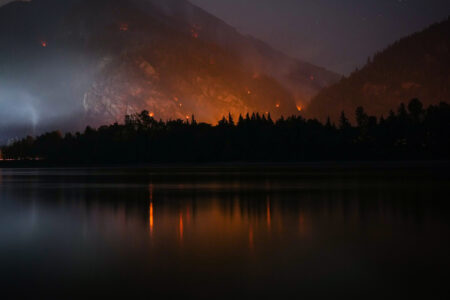
One of the enduring memories of the Liberal Party of Canada — still — is the legacy of the National Energy Program (NEP) in 1980. Even though it is more than three decades in the past, westerners remember. And they fume. It’s a type of anger that those in the rest of the country will never understand. And to many grumpy westerners, it matters not that most of the old guard that dreamed up the NEP is long gone.
New generations of westerners — either those recently arrived or those under 40 years of age — have no personal connection to the economic hardship that was caused by the NEP in Alberta. Yet somehow the rage lives on, like a family ghost story that takes on a dimension of its own, based less on fact and more on emotion. Westerners’ distrust of the Liberal Party endures, defying logic.
Today, some 32 years after the NEP, western Canada is the economic engine of the country. And every private sector economist in the land will tell you that this trend will continue in the coming decade. As long as resource prices remain high, Alberta and Saskatchewan will be the golden geese. Liberals, of course, understand the realities of economics: you don’t kill the golden geese. So why will the Liberal Party of Canada continue to face such an uphill battle for votes in the West?
Despite rumours to the contrary, “the West” is not a monolithic bloc of voters who think the same on all issues. Voters in Calgary Centre South have much more in common with those in urban Toronto and Montreal than they do with those in rural British Columbia. And conservative-minded folks in rural Manitoba will tend to be aligned in their perspectives with voters in rural New Brunswick or Ontario. Cleavages in the country run more rural vs. urban, not necessarily east vs. west.
Still, the fact is the Harper Conservatives hold 73 of 92 seats in the West (even though popular vote is far less lopsided). In Alberta, the emotional and political base, the Harper Conservatives hold 27 of 28 seats. And the one seat in Alberta not held by Harper belongs to the NDP.
The Liberals hold a meagre four seats in the West.
The biggest problem for the federal Liberals in Western Canada is the strong economy. Three of the four “have” provinces are in the West, and the one western “have-not” province, Manitoba, has an unemployment rate of around 5 percent. There’s really not too much to be angry about — at least not about the economy. Opposition parties tend to ride the waves of discontent, but in western Canada in 2012, the waters are pretty calm.
Unfortunately for the Liberals, their electoral success in the West is not expected to pick up any time soon. There are three reasons why.
First, from crude oil to canola, resource prices are the driver of much of the West, and these prices are strong. Employment is strong in most of the rural West, with the exception of the agricultural lower mainland of British Columbia (i.e., Abbotsford). It’s hard to tap into discontent and the need for change when a shortage of labour — not a shortage of jobs — is the biggest problem plaguing the economy.
Secondly, as revealed by the latest census data, population growth is focused in western Canada. Interprovincial migrants from central Canada to the West are less likely to gravitate towards the Liberal Party. In other words, if you are a confirmed Liberal voter living in Toronto Centre or Scarborough-Agincourt, you’re less likely to be packing up boxes and moving West. That leaves the Liberal voters more concentrated in fewer ridings. Interprovincial migrants may be naturally more likely to switch party alliances.
The third reason is that only a couple of years ago, under the leadership of Stéphane Dion, the federal Liberals campaigned on a carbon tax that would punish Alberta and Saskatchewan and transfer funds to other provinces for social programs. Call it what you want (the Liberals called it The Green Shift), but westerners smelled a skunk. It was enough to convince some westerners that, no matter what, Liberals are not to be trusted.
As an opposition party, the Liberals do face the same challenges in the West as they do everywhere else in the country. The NDP, at least for now, has solidified that role. And while anything could happen between now and the next election (including the election of a new NDP leader), the longer the Big Orange Machine holds on to Stornoway, the more Canadians will accept them as a credible opposition.
Despite some very bright thinkers and social progressives, the Liberals have a huge uphill battle. The challenges in Ontario, Quebec and Atlantic Canada are daunting enough. The hurdles in western Canada are downright punishing.
Photo: Shutterstock









